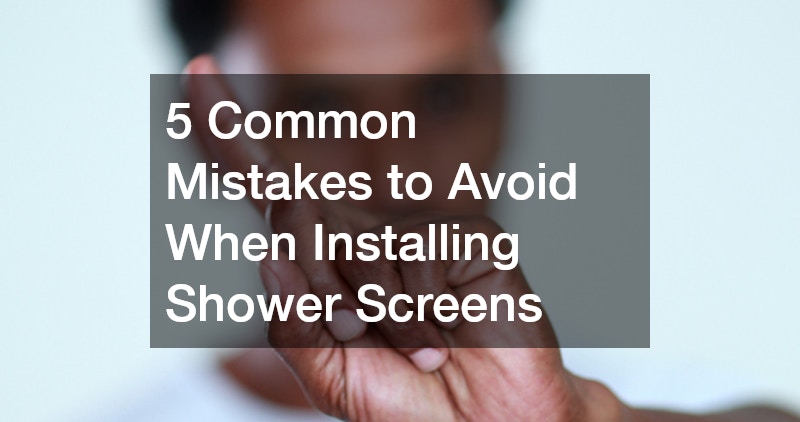Shower screens are an essential feature in any modern bathroom. They provide a sleek, clean look while ensuring water stays within the designated wet area, preserving the rest of the space.
However, a flawless finish requires more than just aesthetic choices—it depends heavily on proper installation. Whether you’re a homeowner attempting a DIY project or a professional ensuring best practices, avoiding common errors can save you time, money and frustration. Below are five frequent mistakes people make when installing shower shields and how to avoid them.
1. Incorrect Measurements
Taking inaccurate measurements is perhaps the most common and costly mistake. A few millimetres off can result in misaligned panels, water leaks or the inability to fit the screen entirely. It’s critical to measure not just once, but at least twice, preferably at different times of day and after the area has dried completely.
Bathrooms are rarely perfect rectangles; floors may not be level, and walls may not be plumb. Failing to account for these imperfections can lead to poor fitting. For best results, use a spirit level and laser measure. If there’s any uncertainty, consult with a professional before ordering your shower covers to ensure they’re tailored to your space.
2. Neglecting Wall & Floor Preparation
Improper surface preparation is another major misstep. Installing shower shields onto surfaces that are dirty, uneven or not waterproofed can compromise both appearance and function.
Before installation, ensure the walls are tiled and sealed properly. Grout should be set, and the area must be clean and dry. A common oversight is rushing the process before the waterproofing membrane has fully cured, which may lead to moisture seepage and long-term structural issues. Skipping this step may also void warranties on both the product and your bathroom renovation.
3. Using the Wrong Hardware or Sealants
Not all sealants and fixtures are suitable for use in wet areas. Using general-purpose silicone or low-quality brackets may result in deterioration or even detachment over time.
When securing shower screens, always opt for bathroom-grade, mould-resistant silicone and corrosion-resistant fittings—ideally stainless steel or brass. Inferior materials not only reduce the longevity of the screen but can also impact safety, especially in frameless glass models where stability is key.
Additionally, apply sealant sparingly but effectively. Too much can create an unsightly mess; too little can leave gaps for water to escape. The right balance ensures a secure, clean finish.
4. Failing to Follow Manufacturer Instructions
DIY enthusiasts sometimes rely on online videos or past experiences rather than the specific instructions provided by the screen manufacturer. This can lead to incorrect assembly or installation that doesn’t account for the unique design of a particular model.
Each set of shower shields has been engineered with precise tolerances and assembly steps. Ignoring these guidelines may not only cause poor performance but could void product warranties. Whether it’s hinge alignment, glass panel positioning or weight distribution, following the manual ensures everything functions as intended.
Moreover, always double-check the parts list before beginning the installation. Missing screws, brackets or seals can create delays or unsafe outcomes. If a part is absent, contact the supplier before proceeding.
5. Overlooking Safety Precautions
Working with large glass panels comes with inherent risks. Failing to handle them correctly can lead to injury or property damage. One of the most common oversights is attempting to install shower covers alone without appropriate lifting tools or assistance.
Toughened safety glass is durable but heavy. If dropped or struck incorrectly, it can shatter. Always wear protective gloves and safety glasses during installation. Use proper lifting techniques and secure the panels upright on padded surfaces when not in use.
Also, make sure the glass edges are not exposed to hard surfaces during the process. Small chips or cracks—often caused by accidental knocks—can lead to full fractures later on, especially under stress from hinge movement or temperature changes.
Installing shower screens may appear simple, but small oversights can lead to significant issues. From measurements and materials to following manufacturer guidelines and prioritising safety, each step plays a critical role in ensuring a secure and watertight result.
Avoiding these five common mistakes not only ensures your bathroom looks great but also guarantees the screen functions as it should, protecting your space from water damage and preserving the investment in your renovation.
Whether you opt for framed, semi-frameless or frameless shower shields, a meticulous approach to installation makes all the difference in achieving both durability and design success.




